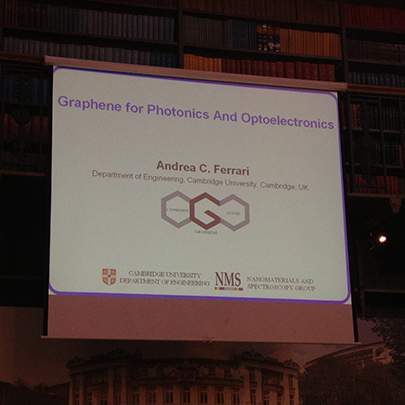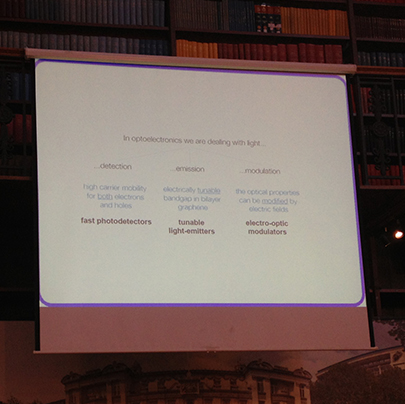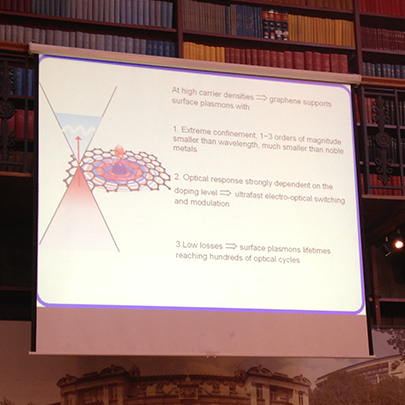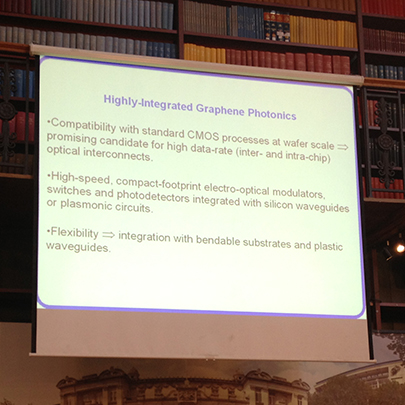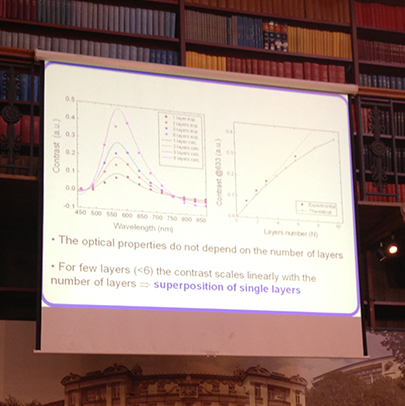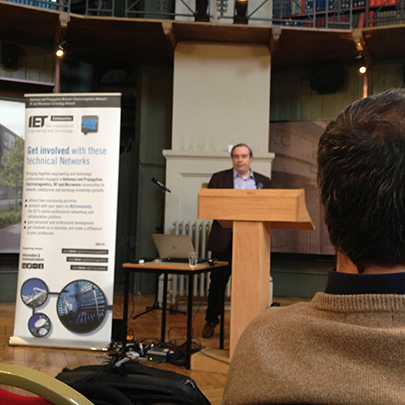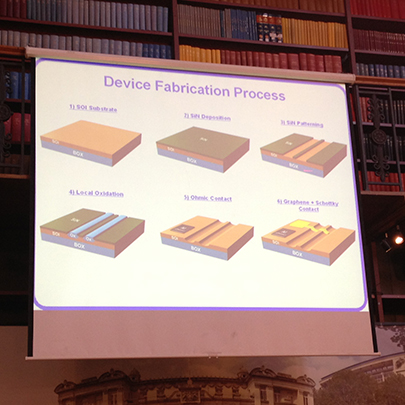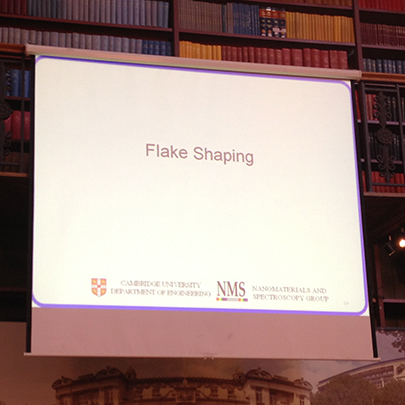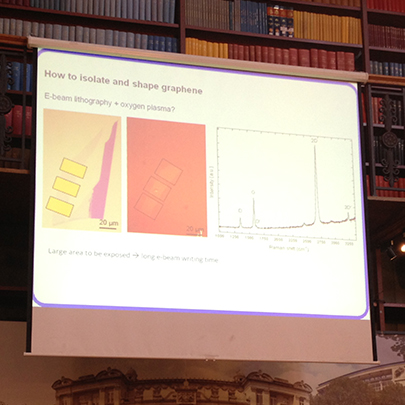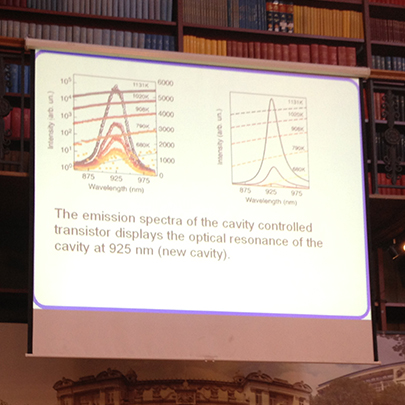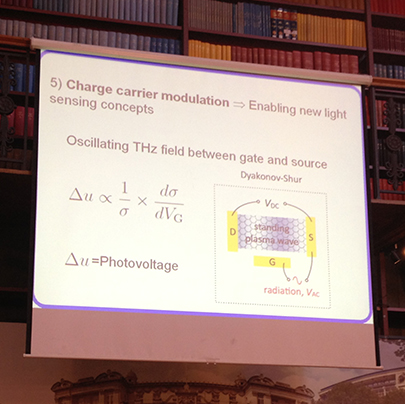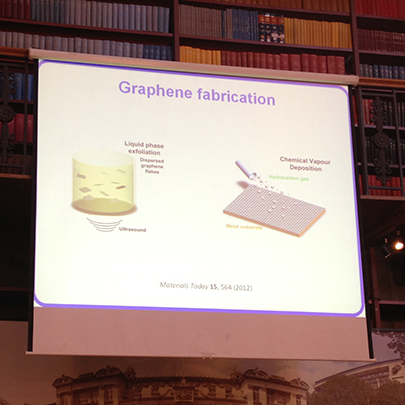Graphene-based Technologies
Keynote Speaker: Andrea Ferrari
Queen Mary University of London, London, February 2015
During the day long event at Queen Mary University of London, over 15 speakers including students and professors discussed the fields and uses of graphene in which they specialize and are conducting research.
Both current and future trends in Graphene research were reviewed, with particular emphasis was on material characterisation, production techniques and the latest applications in RF devices.
Graphene's unique characteristics include its strength — around 100 times stronger than steel, and its two-dimensional nature which enables it to be stretchable as well as optically transparent. It is a very efficient conductor of heat and electricity, and further notable properties include the material's large quantum oscillation, ballistic transport of charges and bipolar transistor effect. Graphene was first produced in the lab in 2003, although it is thought to have been produced inadvertently for 100s of years through, for example, the use of a graphite pencil against a paper surface.
I found to be of particular interest Professor Nicola Pugno's talk on Graphene-based composites, as well as Haider Butt's presentation on his research into graphene based ultra-thin flat lenses, with possible application, for example in mobile phones.
The full list of speakers at the event and their specialisations;
Graphene Photonics and Optoelectronics
Andrea Ferrari, Director, Cambridge Graphene Centre and Head of the Nanomaterials and Spectroscopy Group, University of Cambridge Engineering Department and Nanoscience Centre
Graphene Microwave Measurement and NEMs Applications
Dr Ling Hao, National Physical laboratory (NPL)
Graphene Devices for High Frequency Applications
Professor Henri Happy, Institute of Electronic, Microelectronic and Nanotechnology (IEMN), University of Lille 1, Sciences and technologies Cité Scientifique, France
CVD Enabled Graphene Manufacture and Technology
Dr Stephan Hofmann, Reader in Nanotechnology, Department of Engineering | University of Cambridge
Microwave-to-terahertz characterisation and applications of CVD Graphene
Professor Norbert Klein, Professor of Electromagnetic Materials Director of Imperial's Centre for Terahertz Science and Engineering Department of Materials, Imperial College London
Emerging Graphene Technologies: Flexible Transparent Conductors
Moon Kang, Department of Engineering, Electrical Engineering Division, University of Cambridge
Graphene-based Composites
Professor Nicola Pungo, Professor of Solid and Structural Mechanics at the University of Trento
Microwave Radiation and Absorption from CVD Graphene
Yang Hao, Professor in Antennas and Electromagnetics, School of Electronic and Computer Science, Queen Mary University of London
Design and Fabrication of The Graphene Broadband CPW Monopole Antenna
Xiao Zhang, School of Electrical and Electronic Engineering, University of Manchester
Optical and Electrical Properties of Multilayer CVD Graphene on GaAs
Hong-Yoel Kim, School of Materials, University of Manchester
Design and Modelling of graphene-based Attenuator
Ting Leng, School of Electrical and Electronic Engineering, University of Manchester
Graphene as a Novel Single Photon Counting Optical and IR Photodetector
Jamie williams, Department of Physics & Astronomy, University of Leicester
Study of Graphene-based Ultra-thin Flat Lenses
Haider Butt, School of Mechanical Engineering, University of Birmingham
Measurement of Graphene at Microwave and THz Frequencies
Dr Anestis Katsounaros, Queen Mary University of London
Modelling of Graphene Transistors for RF and THz Applications
Mr Jing Tian, Queen Mary University of London


